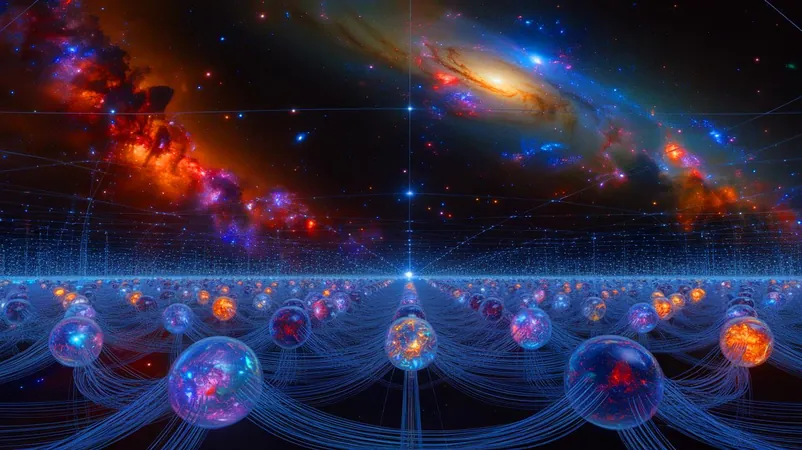
AI Revolutionizes Space Exploration: Chinese Scientists Map 27 Million Cosmic Objects!
2025-07-30
Author: Ming
Astronomers' Quest for Cosmic Understanding
In the ever-expanding universe, astronomers are on an insatiable quest to uncover its secrets. Traditional methods like spectroscopy have struggled under the avalanche of data from modern sky surveys, until now! A revolutionary AI model from a team of scientists in China is set to reshape our approach to space exploration, having already classified an astonishing 27 million cosmic objects.
Harnessing the Power of AI in Astronomy
Developed at the Yunnan Observatories, this cutting-edge neural network tackles a long-standing problem in astronomy: distinguishing between stars, quasars, and galaxies that often look strikingly similar. By employing a dual-input strategy, the AI examines both the shape and the spectral energy distribution of celestial bodies, unlocking a more sophisticated view of their differences.
Trained on a treasure trove of data from the 17th release of the Sloan Digital Sky Survey, this model proved its mettle against images from the Kilo-Degree Survey (KiDS), showcasing its extraordinary capability to sift through and classify vast amounts of astronomical data.
Unprecedented Accuracy and Discoveries Await!
The AI's prowess was further validated using datasets from prestigious missions like Gaia and the GAMA survey, achieving a jaw-dropping 99.7% accuracy in classifications. It not only managed to correctly identify celestial objects but also rectified classifications that had previously stumped researchers!
The Future of Sky Surveys Looks Bright
With billions of objects poised to be observed in upcoming sky surveys, astronomers are in dire need of fast and accurate data-processing tools. Although this AI model doesn't render traditional spectroscopy obsolete, it enhances photometric data analysis and holds the promise of unearthing rare stars and cosmic mysteries.
Navigating the Challenges of AI in Astronomy
However, no tool is without its challenges. The model's success heavily relies on the quality of training data, and variations across different datasets could yield inconsistent results. The researchers are acutely aware of these hurdles and are dedicated to refining the AI for future surveys, allowing it to handle even the faintest celestial objects.
Endless Possibilities in Cosmic Discovery
The emergence of AI in astronomy signals a thrilling era of exploration. With the power to process vast data sets rapidly, researchers can now shed light on previously hidden patterns and cosmic phenomena. The ongoing evolution of AI technologies promises even more groundbreaking insights into the universe.
A Pivotal Moment for Cosmic Exploration
The innovative AI model from the Yunnan Observatories embodies a watershed moment for space research. As we stand on the precipice of cosmic discovery, questions arise about the future of AI in our quest to understand the universe. What revelations lie ahead? How will this technology reshape our cosmic perspective? One thing is certain: the stars are just the beginning!

 Brasil (PT)
Brasil (PT)
 Canada (EN)
Canada (EN)
 Chile (ES)
Chile (ES)
 Česko (CS)
Česko (CS)
 대한민국 (KO)
대한민국 (KO)
 España (ES)
España (ES)
 France (FR)
France (FR)
 Hong Kong (EN)
Hong Kong (EN)
 Italia (IT)
Italia (IT)
 日本 (JA)
日本 (JA)
 Magyarország (HU)
Magyarország (HU)
 Norge (NO)
Norge (NO)
 Polska (PL)
Polska (PL)
 Schweiz (DE)
Schweiz (DE)
 Singapore (EN)
Singapore (EN)
 Sverige (SV)
Sverige (SV)
 Suomi (FI)
Suomi (FI)
 Türkiye (TR)
Türkiye (TR)
 الإمارات العربية المتحدة (AR)
الإمارات العربية المتحدة (AR)